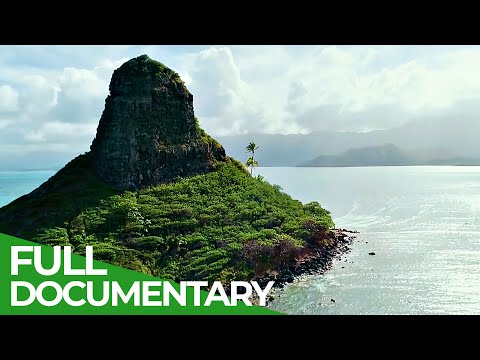
Nestled in the central Pacific, part of the Hawaiian archipelago, lies Oahu, an island that not only pulsates with vibrant energy but also resonates with a deep cultural heritage. Often referred to as “The Gathering Place,” Oahu is the third-largest of the Hawaiian Islands and serves as the cultural and economic heart of Hawaii. This island offers a unique blend of natural beauty, ancient traditions, and modern attractions making it an irresistible destination for travelers and a profound subject for any documentary.
**Natural Wonders**
Oahu’s landscape is a diverse tapestry that ranges from bustling city life to tranquil nature reserves. At the forefront of its natural beauty is the iconic Diamond Head State Monument—an extinct volcanic tuff cone that provides breathtaking panoramic views of Honolulu once you reach its summit. For nature enthusiasts, a documentary featuring Oahu’s incredible biodiversity would be incomplete without exploring its lush rainforests or the serene beaches that line its coasts—from the famous Waikiki Beach to the more secluded shores of Lanikai.
The island’s geography makes it ideal for numerous outdoor activities. Surfing, once practiced by ancient Hawaiian royalty known as ‘Alii,’ continues to be a significant part of Oahu’s culture, especially on the North Shore where towering waves attract surfers from around the globe during winter months.
**Cultural Heartbeat**
Delving into Oahu’s rich cultural tapestry reveals stories steeped in Polynesian history and modern American influence. The Polynesian Cultural Center offers glimpses into the traditions and lifestyles not just of Hawaiians but also other cultures across Polynesia including Samoa, Tahiti, and Maori New Zealanders. Documenting these practices offers invaluable insights into how these cultures have been preserved amidst contemporary influences.
Iolani Palace in downtown Honolulu tells its own tales—being America’s only royal palace used by a reigning monarch—the Kingdom of Hawaii under King Kalakaua and later Queen Liliʻuokalani before their overthrow which led to Hawaii’s eventual annexation by the United States.
**Memorial Sites**
Pearl Harbor remains one of Oahu’s most significant historical sites. The USS Arizona Memorial draws millions each year who come to pay their respects to those fallen during December 7th, 1941 attack—a pivotal moment that dramatically altered global events in World War II. This site offers profound narratives on sacrifice and peace that are essential in understanding both America’s and Hawaii’s past.
**Urban Appeal**
Honolulu, Oahu’s capital city, presents yet another layer with its dynamic mix of east meets west influences seen through its architecture, cuisine, fashion, and general lifestyle. As Hawaii’s largest city it is a hub for international business and military defense. Moreover, arts thrive here—from street murals in Kaka’ako to fine art displayed at Honolulu Museum of Art—a testament to the city’s rich artistic endeavors.
A documentary exploring Oahu could not miss out on local food scenes; dishes like poke bowls tell stories of local tastes while shave ice provides respite from tropical heat—all partaking in culinary customs worth celebrating.
**Environmental Challenges**
As much as Oahu represents paradise on Earth; it also faces environmental challenges such as climate change impacts causing coastal erosion or threats to native species both flora & fauna. A documentary should also shed light on conservation efforts ensuring sustainability so future generations can enjoy this majestic island just like we do today.
**Conclusion**
Oahu stands out as more than just a tourist destination; it is an island where every trail leads to discovery whether scaling volcanic ridges or navigating urban landscapes intertwined with history at every corner. To capture Oahu through a documentary lens is to weave a narrative filled with awe-inspiring vistas interspersed with deep-rooted culture—truly embodying why this island remains at heart—the soulful epicenter of Hawaii.
